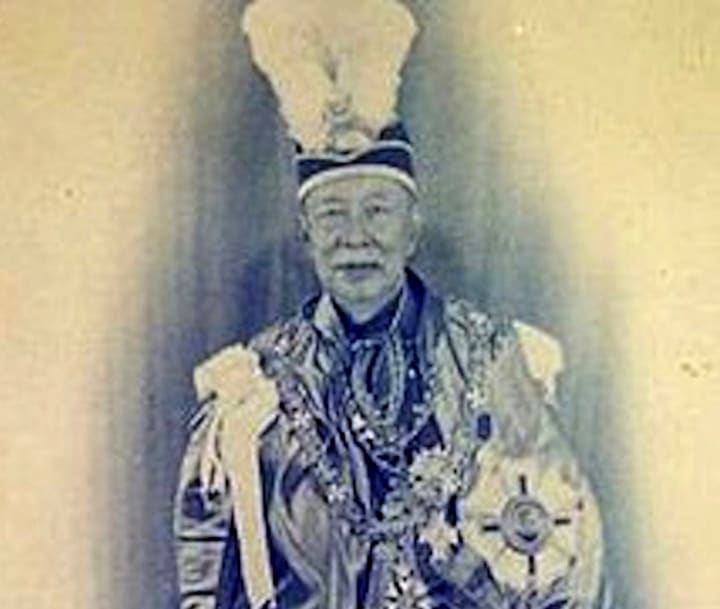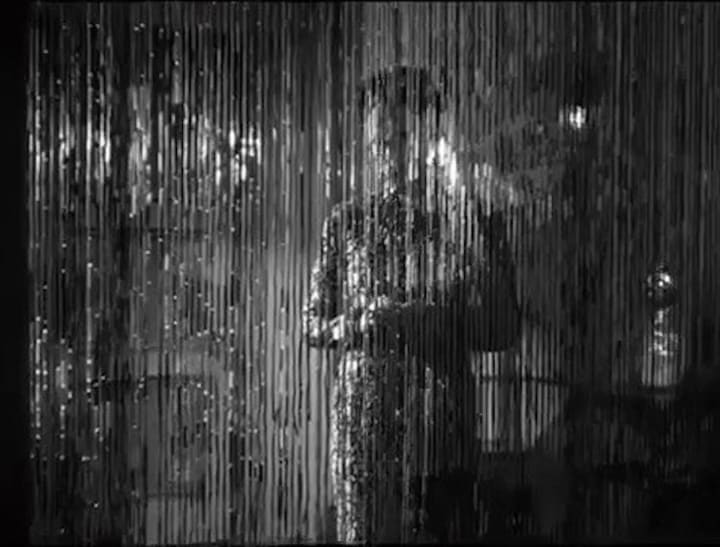Straight Down the Line: Into Film Noir
the moon, the lace, the smoking gun

One of film noir’s most dynamic openings plays out on a moonlit veranda in Singapore in William Wyler’s 1940 classic The Letter. It took Wyler thirty-three takes, exhausting his star, Bette Davis. But it's magic.
Based on a true story known as the Ethel Proudlock case, The Letter was written as a short story by W. Somerset Maugham in 1926. The real life case scandalized British society in 1911 when Ethel, wife of a school teacher in Kuala Lumpur (now Malaysia), emptied a round of bullets into a male visitor one steamy night while her husband was away.

A play and two movies grew out of Maugham’s story. The first movie, released in 1929, starred the legendary Jeanne Eagels. Bette Davis had something of an obsession with Eagels and this fuelled her desire to do the remake.

Eagels would become the first actress posthumously nominated for an Academy Award. She died from substance abuse in '29, and at the 2nd Academy Awards (1930), she contended for the Best Actress Oscar for her performance in The Letter.
In the remake, Bette Davis takes on the Eagels role of Leslie Crosbie. Leslie was Ethel Proudlock’s movie counterpart, but her journey in Howard Koch's 1940 adaptation is peppered with twists and turns that were never part of Ethel’s story, but make for rivetting cinema.
The Hayes Code determined at least one of those twists: Leslie’s fate is substantially different from the fate of Ethel, who was tried for murder, convicted, sentenced to hang, then pardoned by the Sultan of Selangor. She moved away, raised a daughter, and lived the rest of her life in anonymity.

Gale Sondergaard is on board as the formidable Mrs. Hammond, the keeper of the eponymous letter. Originally written as a Chinese woman, the character could’ve been played by the reigning (and only) female Chinese star of the time, Anna May Wong. But Wyler thought she wasn't right for the part, so they changed the role to Eurasian and went with Sondergaard.

Parting shimmering bead curtains to the sound of several tinkling glass wind chimes, Mrs. Hammond first appears before Leslie as a mysterious and chilling presence. This moment comprises one of the most memorable scenes in the movie, which is saying something in a movie full of memorable scenes. In part, that's thanks to cinematographer Tony Gaudio and his exquisite lighting, angles and camera movements. He received an Academy Award nomination for his work in this movie, for a total of six in his career, with one win. (The Letter received seven nominations in all).

A year earlier Sondergaard had been cast to play the Wicked Witch of the West but when it was decided that the Witch would not be a glamorous villainess, Sondergaard bailed. She thought it would damage her career to play a crone of the unglamorous variety. And so we were blessed with Margaret Hamilton’s magnificent turn in The Wizard of Oz.
A decade later what actually damaged Sondergaard’s career was the red scare. Married to Herbert Biberman, one of the Hollywood Ten, she too was blacklisted by HUAC. She didn’t work in film or TV again for almost twenty years.

The Letter’s dramatic climax arrives in one shocking line delivered by Bette: “With all my heart…” It would be a huge spoiler to deliver the rest of the line here. But when you see the scene, take note that Wyler wanted Davis to say the line while looking at her husband, played by Herbert Marshall. But Davis thought her character would look away. Wyler prevailed and the result is a stunning noir climax.
“I lost those battles but I lost to a genius,” Bette would later say of her director (and briefly, her lover).

Herbert Marshall is excellent as Leslie’s thoroughly-devoted and terribly-naive husband, the ultimate noir dupe. A bevy of supporting players add life to the brew, in particular, Sen Yung as Ong Chi Seng, Mrs. Hammond’s broker. Yung brings a perfect degree of polite menace to his character. Also of note: Willie Fung, as Chung Hi, creating a nightmarish ambience with his uncontrolled opium-induced laughter.

Many noiristas cite The Maltese Falcon (1941) as the first “true” noir; anything earlier is labelled proto-noir. While it is true that The Letter is a tad classier than the gritty cinematic worlds we’d descend into as the decade progressed and WW2 raged on, its heart beats the black blood of true film noir. Bathed in moonlight, slashed by venetian blinds, driven by a femme fatale and her lacework, The Letter is as noir as the genre/style gets.

Watch for more film noir musings in my series Straight Down the Line.
About the Creator
Marie Wilson
Harper Collins published my novel "The Gorgeous Girls". My feature film screenplay "Sideshow Bandit" has won several awards at film festivals. I have a new feature film screenplay called "A Girl Like I" and it's looking for a producer.






Comments
There are no comments for this story
Be the first to respond and start the conversation.